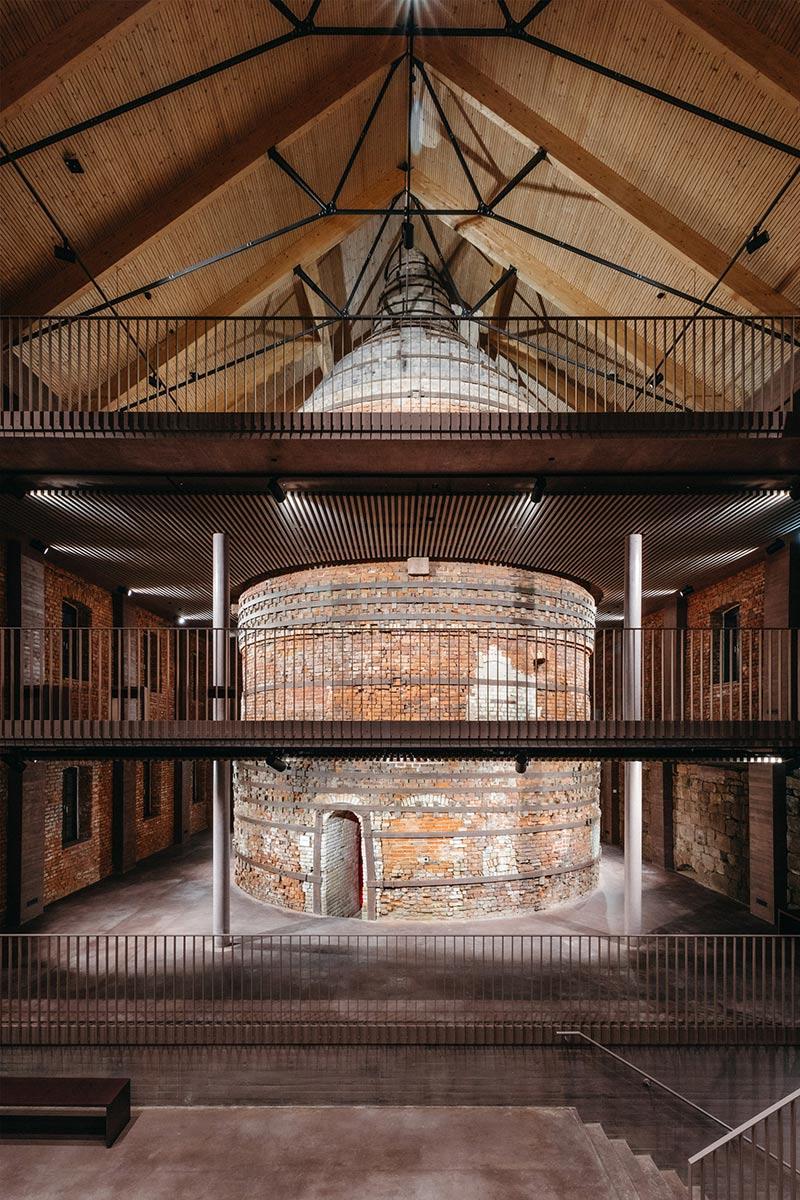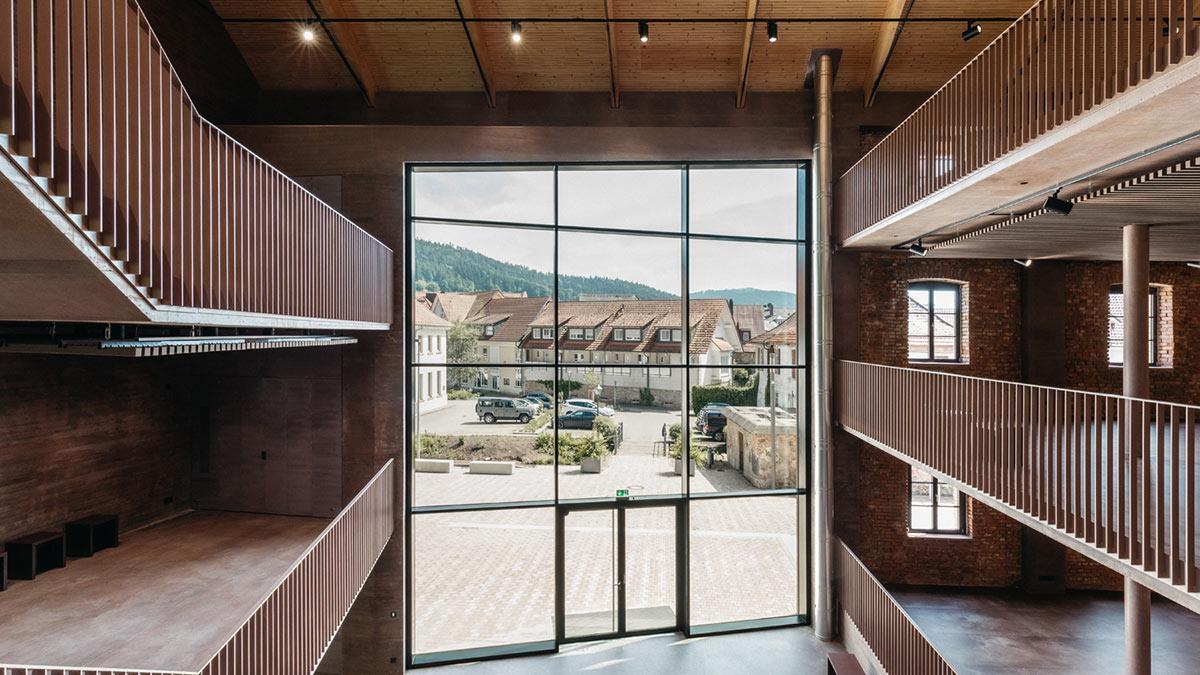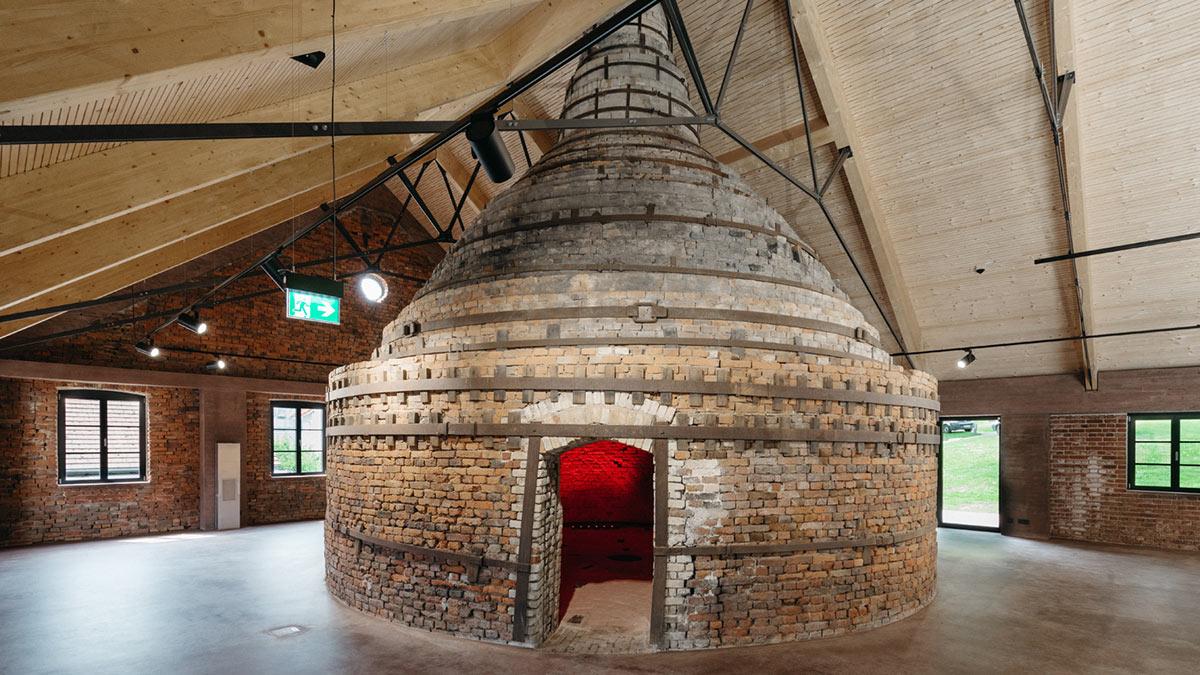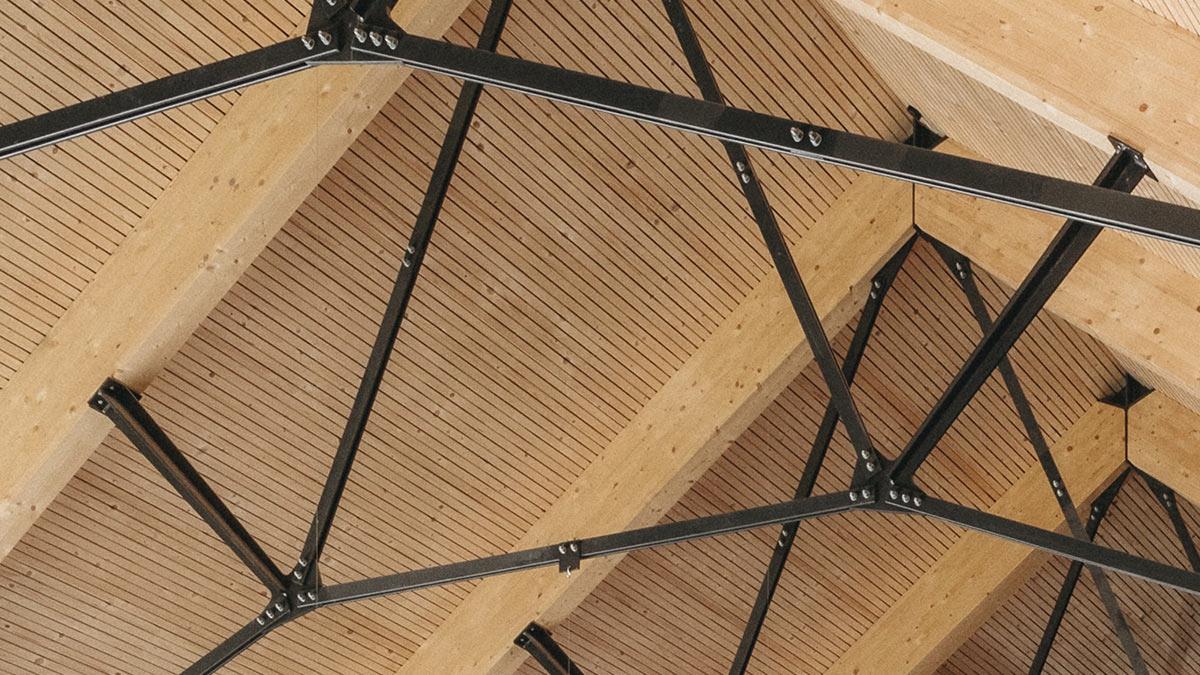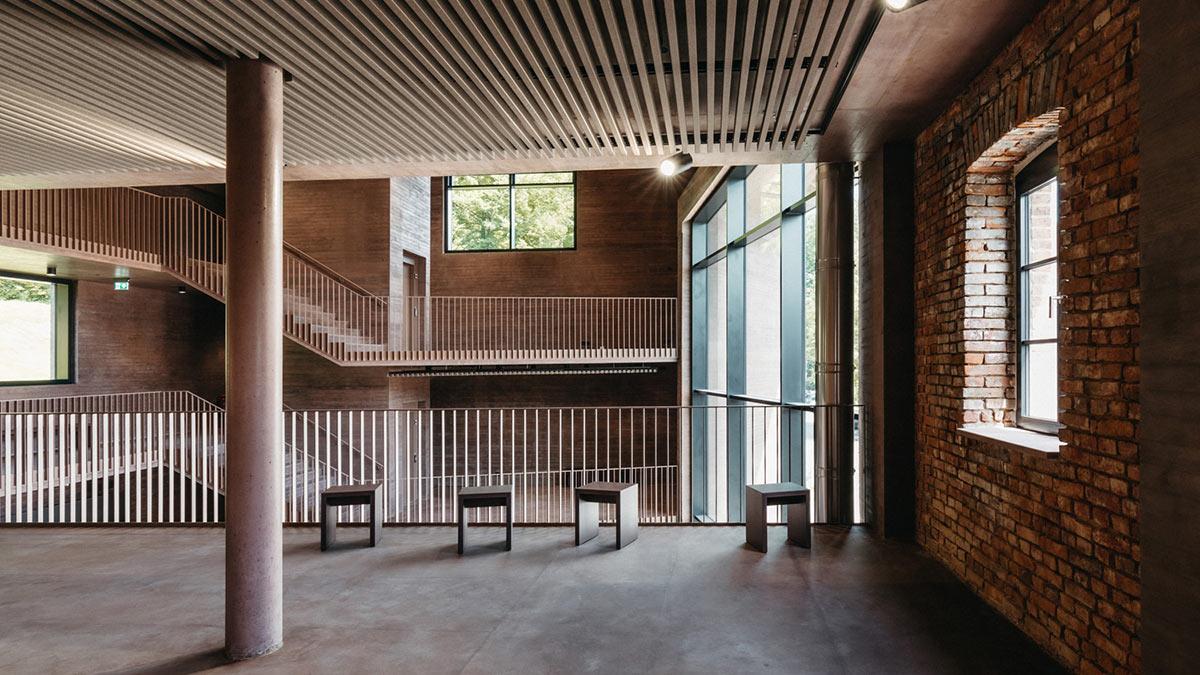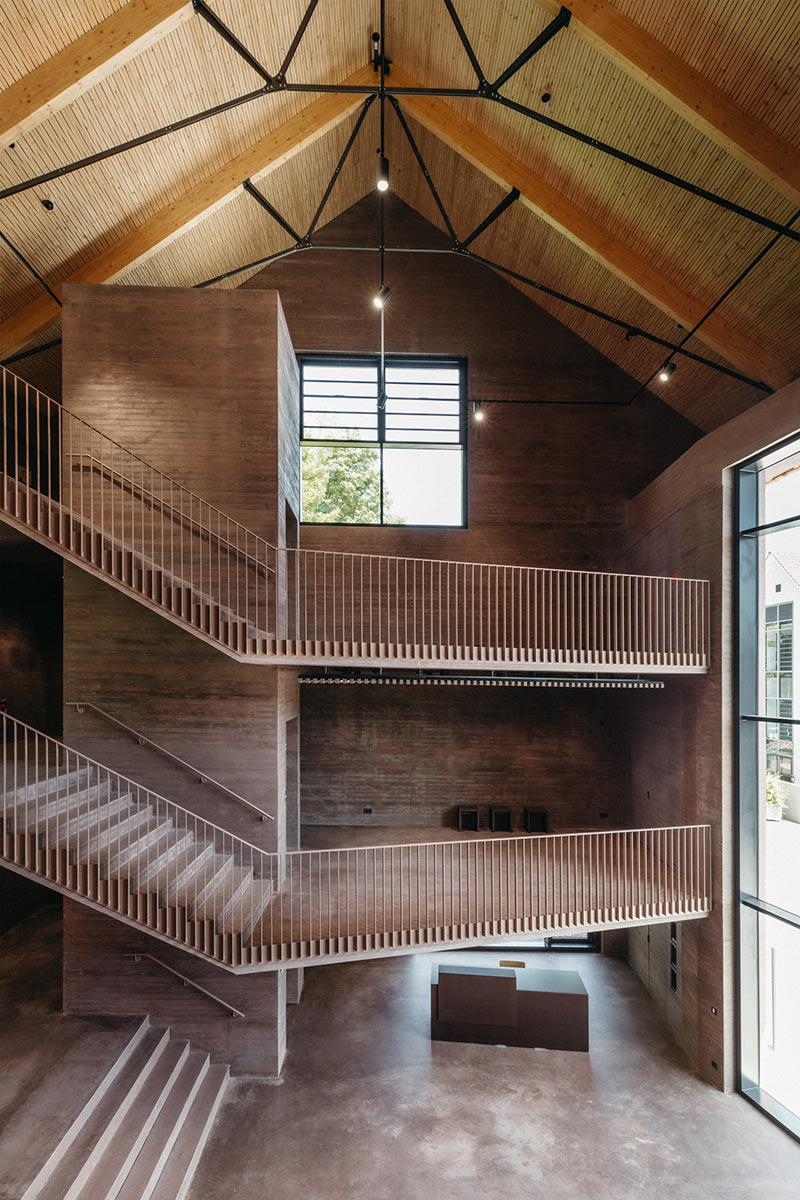A town revives its past
Preservation of the round kiln in Zell has transformed an industrial monument and breathed new life into it. The extension to the original building is a marriage of bricks, wood and red concrete – just one of the lifelong bonds that are formed here.
In Zell am Harmersbach to the south-west of Germany, the round kiln was in full operation for exactly one hundred years, from 1842 to 1942. Measuring 10.3 metres as its outside diameter, this four-storey furnace was used by Zeller Keramik to make their renowned hard porcelain, which needs temperatures of up to 1,500 degrees. While the Upper Factory – the area around the circular kiln – specialized in porcelain, the Lower Factory was used until more recently for making stoneware products that were sold both in Germany and abroad. The famous “Rooster and Hen” (Hahn und Henne) porcelain from Zell is a classic German design and nowadays collectors pay good prices for this tableware.
The past was respected, and its aura was enhanced.
Stefan Wussler, architect
Unused for over 80 years, the round kiln at Zell was hidden away in a corner of the old fortified walls, slowly falling into disrepair and destined only for demolition. Today, it is filled with new life thanks to the town’s commitment to its history and an appreciation of its architectural heritage.
Tying the knot in the firing chamber
This skilful transformation designed by wwg Architekten managed to preserve the only porcelain furnace of its kind in Germany for the benefit of future generations. At the same time, this tranquil town in the Black Forest received a new cultural centre that creates a sense of identification with its local past and brings people together – literally. These days, marriage ceremonies are conducted in the top firing chamber of the refurbished kiln.
Wide, museum-like steps link the entrance foyer with the first level of the historic building that houses the round kiln.
Stefan Wussler, architect
This significant industrial monument has become a new location that not only keeps the site and its history alive, but also offers a versatile spectrum of different uses. Besides an art gallery and a museum of Zell porcelain production, the extended building contains a hall for staging events and concerts.
Extending the existing building
In line with the submitted designs, there were no changes to the outer appearance of the building that housed the round kiln. Instead, this hefty brick building was extended at the gable end to add a section that provides various facilities, with the glazed entrance allowing a clear view of the illuminated round kiln. Architect Stefan Wussler from wwg Architekten explains: “Wide, museum-like steps link the entrance foyer with the first floor of the historic building that houses the round kiln, and this level is adopted by the extension.”
The existing floors were unsafe and had to be replaced by load-bearing concrete floors with component activation. Reinforced concrete columns on the inside strengthened the outer walls, while the roof had to be entirely renewed. The new timber frame fortified by slender steel girders adds to the materiality in the interior. Overall, the blend of new wood, old brickwork and red concrete creates a harmonious impression.
From industrialization to late modernism
This restoration of the round kiln at Zell has succeeded in continuing the architectural story of the building and its history, which spans over 180 years. The historic brick walls tell the story of the early days of industrialization, while the extension at the side begins a new chapter in late modernism. “The past was respected, and its aura was enhanced,” explains Stefan Wussler.
The external facade of the extension is recognizable as ‘new’, although the exposed concrete extension with its brick colouring subordinates itself to the existing building without setting itself apart as being ‘foreign’.
Jury of the Badischer Architekturpreis
The concrete was coloured red in an attempt to harmonize the new extension with the existing bricks. The effect lends a warm quality to the new structure, while the slatted wooden roof lends an aura of craftsmanship. In their statement for the Badischer Architekturpreis, which was won by the round kiln in 2022, the jury wrote: “The external facade of the extension is recognizable as ‘new’, although the exposed concrete extension with its brick colouring subordinates itself to the existing building without setting itself apart as being ‘foreign’.”
Visiting the Upper Factory
The transformation of the round kiln at Zell was also presented with the Hugo-Häring-Prize in 2023. The project is part of the historic site with the Upper Factory, which testifies to the economic upswing of Zell in the second half of the 19th century.
The whole site is divided into a total of seven different areas. Visitors to the round kiln can visit the art exhibition at Villa Haiss, the Tellerbau (plate building), the Mould Cellar (a vaulted storage area) and the Haus Maier. Last but not least, the “Rooster and Hen” trail invites guests on a walk through the forest with beautiful views and stories from past times.
Text: Gertraud Gerst
Translation: Rosemary Bridger-Lippe
Photos: wwg Architekten

